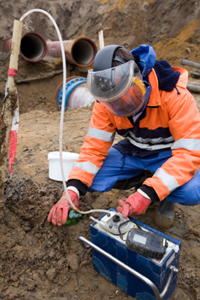When researchers want to understand how microbes interact with toxic materials, they often sequence the organisms collected at waste sites. The problem is that this technique can be time-consuming as researchers search for the key genes involved in the particular function being studied. One way to speed up the process is to manipulate the microbe’s evolution, creating an organism with the desired characteristics for study. Researchers have isolated four bacterial strains that are resistant to radiation. They want to sequence the bacteria to find out how radioresistance happens at a genetic level. The information can also be used to study and even develop organisms with other desired traits such as energy production or bioremediation.

Photo: istockphoto
Principal Investigators: John Battista (Louisiana State University)
Program: CSP 2009